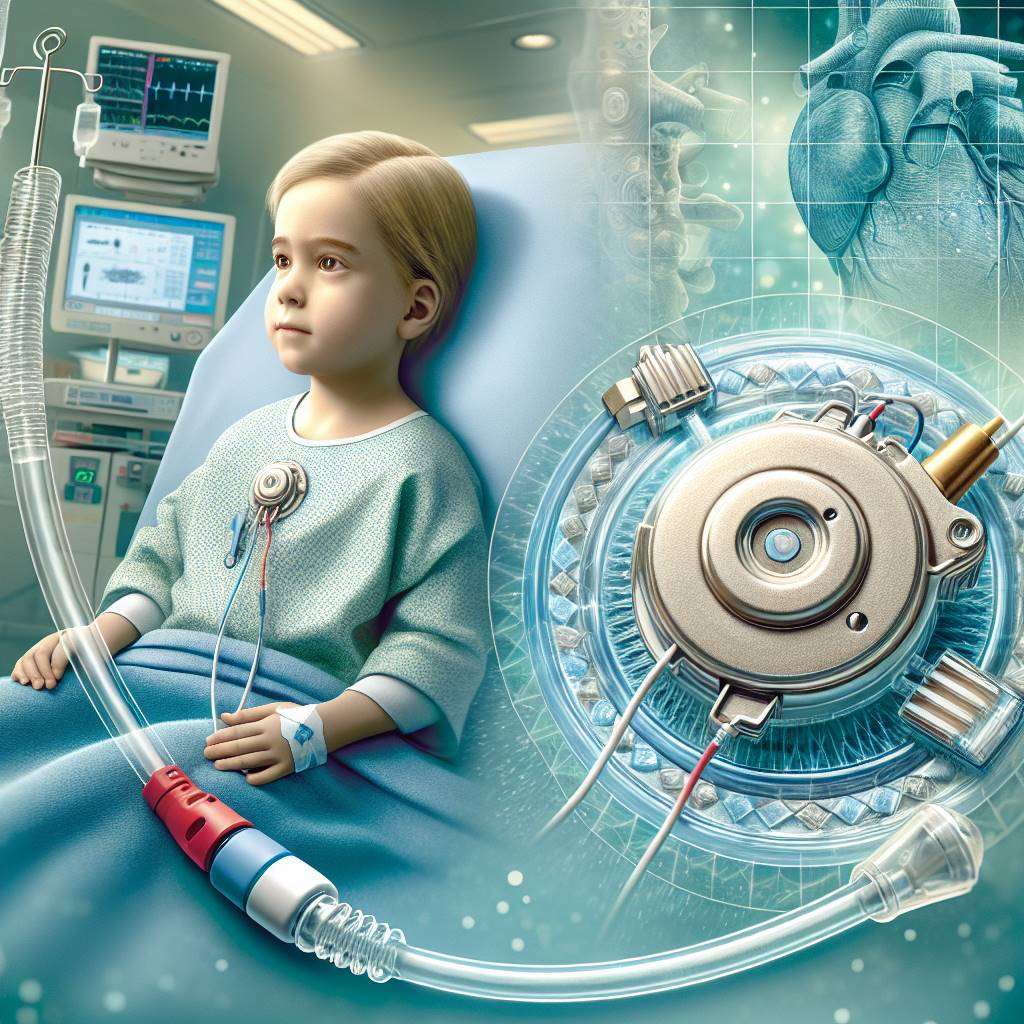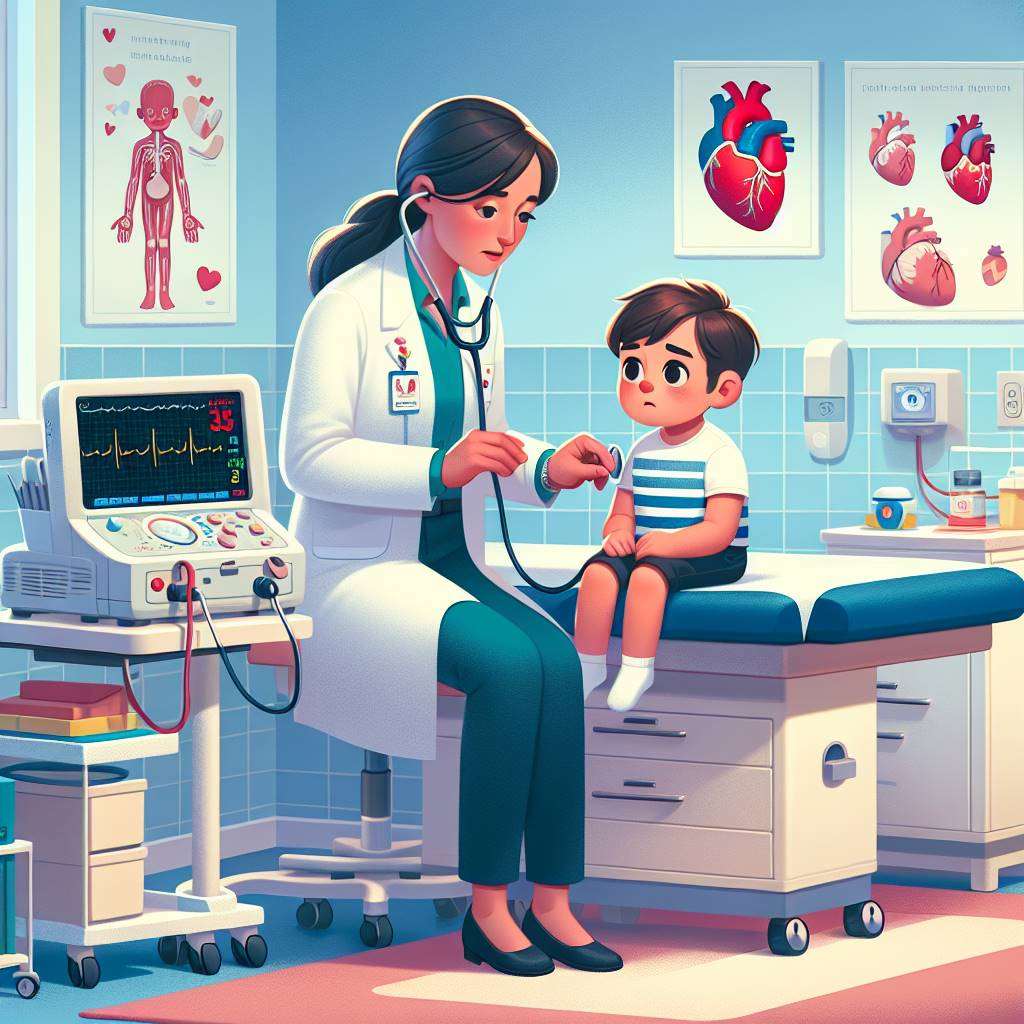Pediatric pacemakers are specialized medical devices designed to regulate the heartbeats of children with congenital heart conditions or other rhythm disorders. Unlike adult pacemakers, these devices must accommodate the unique needs of growing bodies. Understanding their function is crucial for parents and caregivers managing a child’s heart health.
These devices play a vital role in treating bradycardia and other arrhythmias in children. Pediatric pacemakers differ in size, placement, and programming compared to adult versions. Raising awareness about their importance can help families make informed decisions about cardiac care for their children.
What Are Pediatric Pacemakers and How Do They Work?
A pediatric pacemaker is a small, battery-operated device implanted in a child’s body to help regulate abnormal heart rhythms. It sends electrical impulses to the heart to ensure it beats at a normal rate. These devices are essential for children with arrhythmias, where the heart beats too slowly (bradycardia) or irregularly.
The pacemaker consists of two main components: the pulse generator, which produces electrical signals, and leads, which deliver these signals to the heart. Pediatric pacemakers are designed to adapt to the smaller anatomy of children and their active lifestyles. They are often implanted under the skin near the chest or abdomen, depending on the child’s age and condition.
By maintaining a steady heart rhythm, these devices improve the child’s overall cardiac function and quality of life. Regular follow-ups with a cardiologist are essential to monitor the device’s performance and adjust settings as needed.

Key Differences Between Pediatric and Adult Pacemakers
Pediatric pacemakers differ significantly from adult pacemakers in terms of size, placement, and functionality. Since children have smaller bodies, the devices are designed to be more compact and lightweight. This ensures they fit comfortably and do not interfere with the child’s growth or daily activities.
Another key difference is the placement of the device. In children, pacemakers are often implanted in the abdomen rather than the chest to reduce the risk of complications and allow for easier adjustments as the child grows. Additionally, pediatric pacemakers are programmed to adapt to the child’s active lifestyle, accommodating changes in heart rate during play or exercise.
The table below highlights some of the main differences between pediatric and adult pacemakers:
| Feature |
Pediatric Pacemakers |
Adult Pacemakers |
| Size |
Smaller and lightweight |
Larger |
| Placement |
Often in the abdomen |
Typically in the chest |
| Programming |
Adjustable for growth and activity |
Standardized for adult needs |
When Do Children Need a Pacemaker Implant?
Children may require a pacemaker implant if they have a heart condition that affects the heart’s ability to maintain a normal rhythm. Common conditions include congenital heart defects, complete heart block, or severe bradycardia. These conditions can lead to fatigue, dizziness, or even life-threatening complications if left untreated.
Symptoms that may indicate the need for a pacemaker include:
- Chronic fatigue or low energy levels
- Fainting or dizziness
- Shortness of breath
- Slow or irregular heartbeat
A pediatric cardiologist will conduct thorough evaluations, including an ECG and other diagnostic tests, to determine if a pacemaker is necessary. Early intervention can significantly improve the child’s heart function and overall health.
Types of Pacemakers Used in Pediatric Patients
Several types of pacemakers are used in pediatric patients, depending on the specific heart condition and the child’s needs. The most common types include single-chamber, dual-chamber, and biventricular pacemakers. Each type serves a unique purpose in managing arrhythmias and ensuring proper heart function.
Single-chamber pacemakers stimulate one chamber of the heart, usually the ventricle, and are often used for simpler rhythm issues. Dual-chamber pacemakers, on the other hand, stimulate both the atrium and ventricle, ensuring better coordination between the chambers. For children with more complex conditions like heart failure, biventricular pacemakers may be recommended to improve the heart’s pumping efficiency.
The choice of pacemaker depends on factors such as the child’s age, size, and specific heart condition. A pediatric cardiologist will carefully assess these factors to select the most appropriate device.
How Pediatric Pacemakers Are Designed for Growing Bodies
Pediatric pacemakers are uniquely designed to accommodate the growth and development of a child’s body. Unlike adult devices, these pacemakers are smaller and more flexible, ensuring they do not interfere with the child’s physical activities or growth. The leads, which connect the pacemaker to the heart, are also designed to be durable and adaptable.
One of the key features of pediatric pacemakers is their ability to be reprogrammed as the child grows. This ensures the device continues to meet the child’s changing cardiac needs. Additionally, the placement of the device is carefully chosen to minimize discomfort and reduce the risk of complications.
Regular follow-ups with a pediatric cardiologist are essential to monitor the pacemaker’s performance and make necessary adjustments. These devices are a testament to advancements in pediatric cardiac care, offering children with heart conditions a chance to lead healthy, active lives.
Pediatric Pacemakers: How They Differ From Adult Implants
Common Heart Conditions Requiring Pacemakers in Children
Children may require pacemakers due to specific heart conditions that disrupt the normal rhythm of the heart. One of the most common conditions is congenital heart block, which can occur when electrical signals in the heart are blocked or delayed. This condition is often present from birth and may require immediate intervention.
Another condition is bradycardia, where the heart beats too slowly to pump blood effectively. In some cases, children with post-surgical complications after heart surgery may also need a pacemaker to regulate their heartbeat. These devices ensure that the heart maintains a steady rhythm, allowing the child to grow and develop normally.
Early diagnosis and treatment are crucial for managing these conditions. Parents should watch for symptoms like fatigue, fainting, or difficulty breathing, which may indicate an underlying heart issue.

Risks and Benefits of Pacemakers in Pediatric Patients
Like any medical procedure, implanting a pacemaker in children comes with both risks and benefits. The primary benefit is that a pacemaker can restore a normal heart rhythm, improving the child's overall health and quality of life. It can also prevent complications like fainting, fatigue, and even heart failure.
However, there are potential risks to consider. These include infection at the surgical site, device malfunction, or complications during the procedure. Long-term risks may involve the need for future surgeries to replace or adjust the pacemaker as the child grows.
- Benefits: Improved heart function, better energy levels, and reduced symptoms.
- Risks: Surgical complications, infections, and device-related issues.
Parents should discuss these factors with their child's cardiologist to make an informed decision about pacemaker implantation.
How Pediatric Pacemaker Surgery Differs from Adults
Pediatric pacemaker surgery is tailored to the unique needs of children, making it different from procedures performed on adults. One key difference is the size of the pacemaker device. For children, smaller devices are used to accommodate their smaller bodies and growing anatomy.
Another distinction is the placement of the pacemaker. In children, the device is often implanted in the abdomen rather than the chest to ensure better protection and comfort. Surgeons also take extra care to minimize scarring and ensure the device does not interfere with the child's growth.
Additionally, pediatric patients require specialized care during and after surgery to monitor their heart function and adjust the pacemaker settings as they grow. These differences highlight the importance of working with a skilled pediatric cardiologist and surgical team.
Post-Surgery Care for Children with Pacemakers
After pacemaker surgery, children require careful monitoring and follow-up care to ensure the device functions properly. Parents should be aware of signs of complications, such as redness, swelling, or pain at the surgical site, which could indicate an infection.
Regular check-ups with a pediatric cardiologist are essential to monitor the pacemaker's performance and make necessary adjustments. Children should also avoid activities that could damage the device, such as contact sports, unless cleared by their doctor.
It is important to educate the child about their pacemaker and how to live with it safely. For example, they should avoid strong magnetic fields, which can interfere with the device. With proper care, most children with pacemakers can lead active and healthy lives.
Advancements in Pediatric Pacemaker Technology
Recent advancements in pediatric pacemaker technology have significantly improved outcomes for children with heart conditions. Modern pacemakers are smaller, more durable, and designed to adapt to a child's growth. Some devices now feature wireless technology, allowing doctors to monitor the pacemaker remotely.
Another breakthrough is the development of leadless pacemakers, which eliminate the need for wires (leads) that connect the device to the heart. This reduces the risk of complications and makes the implantation process less invasive.
| Feature |
Traditional Pacemakers |
Modern Pacemakers |
| Size |
Larger |
Smaller and compact |
| Leads |
Requires leads |
Leadless options available |
| Monitoring |
In-person check-ups |
Remote monitoring |
These advancements are making pacemakers safer and more effective for children, offering them a better quality of life.
Signs Your Child May Need a Pacemaker Check-Up
Recognizing when your child may need a pacemaker check-up is crucial for their heart health. Common signs include fatigue, shortness of breath, or a noticeable decrease in activity levels. These symptoms may indicate that the pacemaker is not functioning optimally.
Other warning signs include fainting episodes, dizziness, or irregular heartbeats. If your child complains of chest discomfort or you notice swelling near the pacemaker site, it’s essential to consult a specialist immediately. Regular check-ups ensure the device is working correctly and the battery life is sufficient.
Parents should also monitor for any changes in their child’s overall behavior or energy levels. Early detection of issues can prevent complications and ensure the pacemaker continues to support your child’s heart effectively.

How Long Do Pediatric Pacemakers Typically Last?
The lifespan of a pediatric pacemaker depends on several factors, including the type of device and how often it is used. On average, most pacemakers last between 5 to 15 years. However, children may require more frequent replacements due to their active lifestyles and growing bodies.
Battery life is a key determinant of pacemaker longevity. Modern devices are designed to minimize energy consumption, but regular monitoring is essential. During routine check-ups, doctors assess the battery status and overall functionality of the pacemaker.
It’s important to note that advancements in pacemaker technology have significantly improved durability and performance. Parents should work closely with their child’s cardiologist to plan for timely replacements and ensure uninterrupted heart support.
Living with a Pacemaker: Tips for Children and Parents
Adjusting to life with a pacemaker can be challenging, but with the right guidance, children can lead active and fulfilling lives. Parents should educate themselves and their child about the device, including its purpose and limitations.
Here are some tips for managing life with a pacemaker:
- Encourage your child to avoid activities that involve direct impact to the chest area.
- Ensure regular follow-ups with a pediatric cardiologist to monitor the device.
- Teach your child to recognize symptoms like dizziness or fatigue and report them immediately.
- Inform school staff and caregivers about the pacemaker and any necessary precautions.
With proper care and awareness, children with pacemakers can participate in most activities and enjoy a high quality of life.
Choosing the Right Specialist for Pediatric Pacemaker Care
Selecting the right specialist is critical for managing your child’s pacemaker. A pediatric cardiologist with experience in pacemaker implantation and follow-up care is ideal. These specialists understand the unique needs of children and can provide tailored treatment plans.
When choosing a doctor, consider their qualifications, experience, and patient reviews. It’s also important to ensure the hospital or clinic is equipped with advanced diagnostic tools and facilities for pacemaker management.
Building a strong relationship with your child’s specialist fosters trust and ensures open communication. This is especially important for addressing concerns, scheduling regular check-ups, and planning for future device replacements.
FAQs About Pediatric Pacemakers for Parents
Parents often have many questions about pediatric pacemakers. Below are answers to some common concerns:
| Question |
Answer |
| Is the implantation procedure safe? |
Yes, it is generally safe when performed by an experienced pediatric cardiologist. |
| Can my child play sports? |
Most non-contact sports are safe, but consult your doctor for specific recommendations. |
| How often are check-ups needed? |
Typically every 6 to 12 months, but this may vary based on your child’s condition. |
Understanding these basics can help parents feel more confident in managing their child’s heart health and pacemaker care.
Best Pacemaker Surgery Doctors in India
Dr. Balaji Seshadri, a renowned pediatric cardiologist at Apollo Hospitals, Chennai, specializes in pediatric electrophysiology with over 20 years of experience. Another expert, Dr. Rajesh Sharma, a senior consultant at Fortis Escorts Heart Institute, Delhi, has performed numerous successful pediatric cardiac surgeries and holds an MCh in Cardiothoracic Surgery with 25+ years of expertise. Learn more on best pacemaker implantation surgery doctors in india
Best Pacemaker Surgery Hospitals in India
Fortis Escorts Heart Institute, Delhi, a NABH-accredited hospital, is renowned for advanced pediatric cardiac care, including pacemaker implantation. Medanta - The Medicity, Gurugram, a JCI-accredited facility, offers multidisciplinary care and cutting-edge technologies like robotic surgery. Both hospitals provide international patient services and have a track record of successful outcomes. Find more best pacemaker implantation surgery hospitals in india
Pacemaker Surgery Cost in India
The cost of pediatric pacemaker implantation in India typically ranges from INR 3,00,000 to INR 7,00,000 (approximately USD 3,600 to USD 8,400). Factors influencing costs include hospital accreditation, doctor expertise, and device type. The average hospital stay is around 5-7 days. India offers a significant cost advantage compared to Western countries, with options for insurance coverage or financing plans. Learn pacemaker implantation surgery cost in india
Pacemaker Surgery Treatment in India
Pediatric pacemaker implantation in India involves pre-procedure evaluations, followed by minimally invasive surgery to place the device. Advanced technologies like 3D mapping and robotic assistance are used in leading hospitals. Recovery typically takes 1-2 weeks, with regular follow-ups. Indian hospitals adhere to global medical standards and adopt innovative techniques for better outcomes. Learn on Pacemaker Surgery Treatment in India
FAQs
What is a pediatric pacemaker?
A pediatric pacemaker is a medical device implanted in children to regulate abnormal heart rhythms, ensuring the heart beats at a normal rate and rhythm.
How is a pediatric pacemaker different from an adult pacemaker?
Pediatric pacemakers are smaller in size and designed to accommodate the growth and unique anatomy of children, unlike adult pacemakers.
What are the risks of pediatric pacemaker implantation?
Risks include infection, device malfunction, or lead displacement. However, these are rare when performed by experienced specialists.
How long does a pediatric pacemaker last?
The battery life of a pediatric pacemaker typically ranges from 5 to 15 years, depending on the device type and usage.
Can children with pacemakers lead normal lives?
Yes, most children with pacemakers can lead normal, active lives with some precautions and regular follow-ups.
What precautions should be taken after pacemaker implantation?
Avoid exposure to strong magnetic fields, follow activity restrictions as advised, and attend regular check-ups to ensure the device functions properly.
Is the procedure painful for children?
The procedure is performed under general anesthesia, so the child does not feel pain during surgery. Post-operative discomfort is managed with medications.
How soon can a child return to school after pacemaker implantation?
Most children can return to school within 2-4 weeks, depending on their recovery and the doctor’s advice.
Are there any lifestyle restrictions for children with pacemakers?
While most activities are safe, children with pacemakers should avoid contact sports and activities that may cause trauma to the chest area.
What follow-up care is required for pediatric pacemakers?
Regular follow-ups are essential to monitor the pacemaker’s function and adjust settings as the child grows.
Understanding Pacemakers: Removal and Customization
Pacemakers play a crucial role in managing heart rhythms, but there are instances when removal may be necessary. Understanding the circumstances surrounding this procedure can be vital for patients and their families. For insights on when and why a pacemaker might be removed, check out this informative article on pacemaker removal.
Moreover, the effectiveness of a pacemaker largely depends on how well it is tailored to the individual’s needs. Doctors customize pacemaker settings to ensure optimal heart rhythm management, which is essential for patient well-being. To learn more about how these settings are adjusted and what factors influence them, read this detailed blog on pacemaker settings.
By understanding both the potential for removal and the customization of settings, patients can engage more effectively with their healthcare providers, ensuring the best possible outcomes for their heart health.